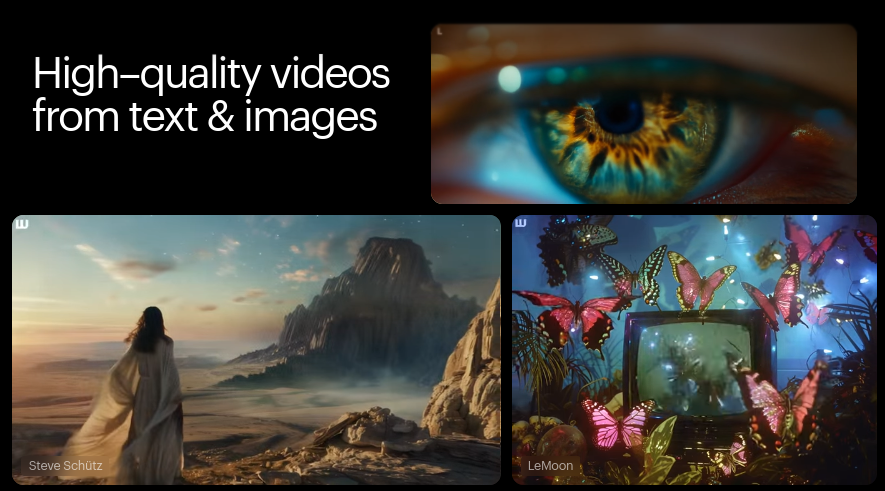 AI
AI
 AI
AI
 AI
AI
Artificial intelligence startup Luma AI Inc. said today it’s making its entrance into the text-to-video generation segment of the generative AI industry with a new tool called Dream Machine.
The startup says Dream Machine is a powerful new AI system that’s able to generate high-quality videos based on simple text prompts, paving the way for companies and other creators to produce new and original video content in a matter of minutes.
According to Luma AI, Dream Machine is available for anyone to use starting from today. To create a video and make the most of its capabilities, users have to enter more descriptive prompts than they might do with something like ChatGPT. For instance, a prompt such as “a cute Dalmatian puppy running after a ball on the beach at sunset” would result in an extremely realistic-looking, five-second video clip showing just that, the company said.
Dream Machine should be able to generate such a video within just two minutes, it said.
Text-to-video is at the cutting edge of generative AI technology, and Luma AI faces some stiff competition in the business. OpenAI recently announced a new model called Sora that can generate videos up to a minute long while maintaining visual quality and adherence to the user’s prompt. Meanwhile, Lightricks Inc. has debuted the LTX Studio platform, which not only generates video clips but also provides a range of editing tools for users to customize their video creations.
Other competitors include startups such as Pika Labs Inc. and Runway Inc., which specialize in text-to-video generation.
Luma AI cites early beta testers, who say the strength of its platform lies in its ability to faithfully render specific objects, characters, actions and environments, tell coherent stories and maintain fluid motion throughout.
Perhaps the biggest advantage of Dream Machine is that Luma AI has gone for an open-source approach. Although OpenAI’s Sora is impressive, it is currently accessible only to a select group of users, and the company has hinted that its best capabilities will be reserved for paying subscribers, similar to ChatGPT.
However, Dream Machine is available now to anyone who’s willing to experiment with the platform. In the future, Luma AI says, it will launch various APIs and plugins to integrate the platform with creative software tools such as Adobe.
By pushing a more open approach to text-to-video generation, Luma AI could benefit from a first-mover advantage, creating a community of developers and creators around Dream Machine. That’s important, because the generative AI industry is intensely competitive, and there are plenty of other big players who have yet to debut a text-to-video product, such as Anthropic PBC, Cohere Inc., AI21 Labs Inc. and Mistral.
Most likely, the leaders in this emerging field will be the ones that can generate the highest-quality videos at the lowest price, but doing that isn’t easy. One of the major challenges in text-to-video generation has been the quality of the videos produced by such models. Until now, it has been very difficult to make videos that look and feel realistic, but the demos posted on Luma AI’s website suggest that the company appears to have cracked this.
However, the company also admits its video generator models struggle in some areas, such as recreating natural looking movements, morphing effects and text.
Like other generative AI companies, Luma AI and its Dream Machine are going to have to confront legal questions around the use of copyrighted training data, as well as ethical questions that stem from fears its video might try to replace human actors. There’s also a significant potential for Dream Machine to be misused to create deepfakes and facilitate the spread of misinformation.
The fact that the industry is still grappling with these issues at a time when it’s now possible for anyone to create extremely realistic video footage highlights the rapid progress of generative AI and its potential to transform the way new content is generated.
THANK YOU